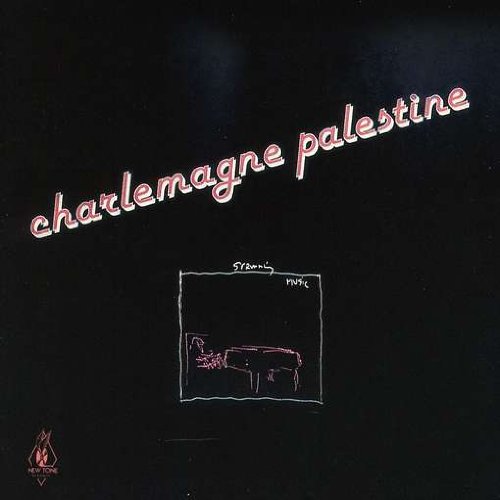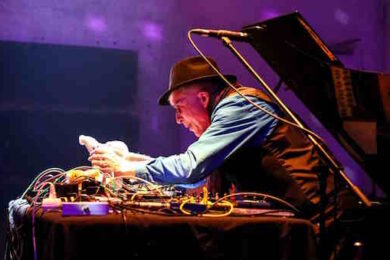6. Charlemagne PalestineStrumming Music

We met at NYU, and he followed Morton out to CalArts. When he came back to New York, I was programming music at The Kitchen in 1971, and I invited him to play. He’d come back and his music had changed completely. He did a new piece for Buchla synthesiser that was a drone, very beautiful. At a point in 1973 he developed a piece for piano, which was essentially just to take a perfect fifth and simply play it, listening to the frequency of C and G. What he was really listening to was the harmonic series they were generating. He would then add more pitches, becoming more complex. This piece became his tour de force piece. For me I was attracted by the piece because I was working as a piano tuner to support myself while going to school, and I had to be able to hear overtones.
Charlemagne was making an entire piece out of overtones, and this had a direct relation and correspondence to my work with electric guitar. The first piece I ever made that I consider not to be a student piece was called Guitar Trio, which was three to ten guitars doing flatpick overtone work. I first did it at the height of the punk period, where audiences thought you were arty. If they liked you, they threw beer cans at you. If they didn’t like you, forget about it! To merge minimalist with punk rock was my thing – I had a second epiphany hearing the Ramones. Audiences were saying to the sound man, "Where are you hiding the singers? We hear choirs of voices." That’s what I was doing with the overtones. Even if you didn’t have an MA in music you could appreciate it. This music comes from Charlemagne’s Strumming Music, which was the same thing but with piano. I was thinking, "How can I do this in a rock context?"


